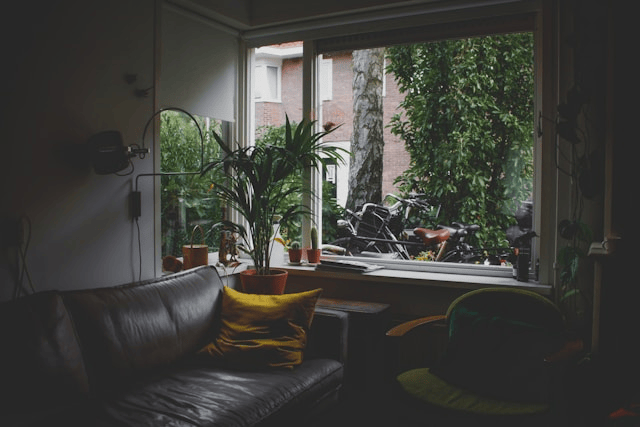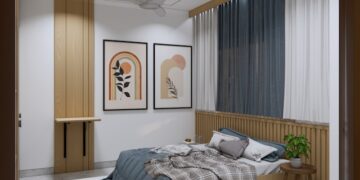As temperatures soar during the summer months, many homeowners find themselves constantly reaching for the thermostat. But relying heavily on air conditioning can quickly lead to high energy bills and increased strain on the environment. The good news is that there are plenty of smart and simple ways to keep your home cool without cranking the AC.
Whether you’re looking to cut down on utility costs, reduce your carbon footprint, or just stay comfortable during heatwaves, these energy-efficient home cooling tips can help transform your living space into a summer-friendly oasis.
Block Out the Sun
One of the most effective ways to keep your home cool is to prevent sunlight from heating it up in the first place. Windows can let in a surprising amount of heat during the day.
Tips to Reduce Sun Exposure:
-
Use blackout curtains or thermal drapes to block heat from direct sunlight.
-
Install reflective window film that bounces UV rays away from your home.
-
Close blinds and curtains during peak sunlight hours (usually 11 a.m. to 4 p.m.).
This simple change can significantly lower indoor temperatures and reduce the need for air conditioning.
Improve Air Circulation
Another key factor in staying cool without AC is encouraging better air movement throughout your home. Fans don’t lower the temperature, but they do make you feel cooler by moving air over your skin.
Smart Circulation Strategies:
-
Set ceiling fans to rotate counterclockwise in summer. This pushes air downward and creates a breeze effect.
-
Use box fans to draw in cooler night air from outside and exhaust hot air during the day.
-
Open windows on opposite sides of the home to create cross-ventilation, especially in the early morning and late evening.
Improved airflow is one of the most effective summer cooling tips for stuffy rooms.
Optimize Windows and Doors
Your home may be letting in more hot air than you think. By sealing off gaps and making small adjustments, you can significantly reduce indoor heat gain.
Ways to Optimize Openings:
-
Keep windows shut during the hottest parts of the day and open them at night when temperatures drop.
-
Add weather stripping around windows and doors to prevent warm air from seeping in.
-
Use door draft stoppers to keep heat from creeping in through the bottom of doors even during summer.
These energy-efficient home cooling tricks are especially helpful in older homes with less insulation.
Switch to Heat-Reducing Lighting
Did you know that certain types of lighting can contribute to indoor heat? Traditional incandescent bulbs give off a lot of excess heat, which can raise the temperature inside your home.
Lighting Tips to Stay Cool:
-
Replace incandescent bulbs with LEDs, which use less energy and emit less heat.
-
Turn off unused lights and appliances, especially during the hottest times of the day.
This simple switch is not only better for your comfort but also for your electricity bill.
Minimize Appliance Heat
Many common household appliances release heat while operating. From your oven to your dryer, they can work against your efforts to stay cool without AC.
Appliance Heat-Reducing Tips:
-
Avoid using the oven opt for grilling outside, using a microwave, or preparing no-cook meals.
-
Run dishwashers and laundry machines in the evening when the outdoor temperature is lower.
-
Unplug electronics like TVs, computers, and game consoles when not in use to eliminate phantom heat.
These small adjustments can make a noticeable difference in indoor comfort.
Use Natural Cooling Techniques
Looking for natural ways to cool a house? Incorporate a few creative and old-school methods to lower the temperature without using electricity.
Natural Cooling Ideas:
-
Hang a damp sheet in front of an open window to cool incoming air through evaporation.
-
Sleep with lightweight cotton sheets and keep a frozen water bottle near your feet.
-
Take a cool shower before bedtime to lower your body temperature naturally.
These traditional methods are simple yet surprisingly effective.
Create Shade Outside
Don’t overlook your home’s exterior when it comes to reducing heat indoors. Adding shade outside helps block sunlight before it even hits your walls and windows.
Outdoor Shade Solutions:
-
Install shade sails or retractable awnings over patios and decks.
-
Use patio umbrellas or outdoor curtains to create shady spots in outdoor living areas.
-
Plant shade trees or tall shrubs strategically around windows and sun-facing walls.
Shading the exterior of your home is a powerful long-term strategy for summer cooling.
Use Portable or Smart Cooling Devices
If you still need a little extra cooling power, consider more energy-efficient options than running your AC all day.
Efficient Cooling Gadgets:
-
Try evaporative coolers (swamp coolers), which use water and air circulation to cool your space.
-
Use a portable fan in combination with a bowl of ice in front to blow cool air.
-
Install a smart thermostat to better control AC usage and avoid unnecessary cooling.
These tools are perfect for those who want to reduce AC usage in summer while still staying comfortable.
Long-Term Solutions
Investing in home upgrades can provide lasting relief from summer heat while lowering your energy consumption year-round.
Long-Term Cooling Upgrades:
-
Install attic fans or roof ventilation to draw out trapped heat.
-
Improve insulation in walls and attics to block outdoor heat.
-
Use cool roofing materials or apply reflective paint to your roof.
-
Replace old windows with energy-efficient models that offer better thermal protection.
While these improvements require more upfront cost, they offer excellent returns through improved comfort and reduced utility bills.
Conclusion
Staying cool during the summer doesn’t mean you have to sacrifice comfort or rack up high energy bills. With a combination of natural ventilation, strategic shading, smart appliances, and a few DIY adjustments, you can keep your home cool without cranking the AC.









